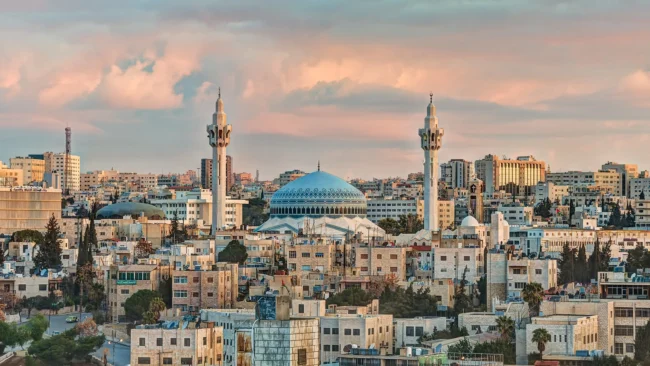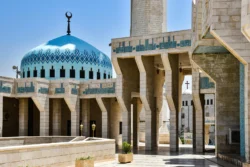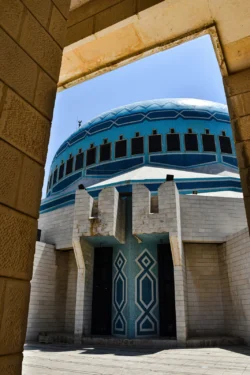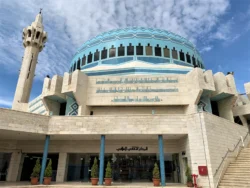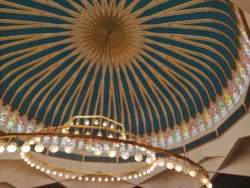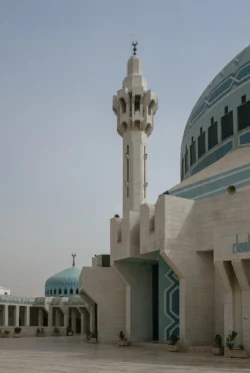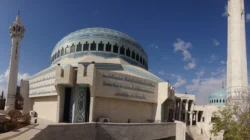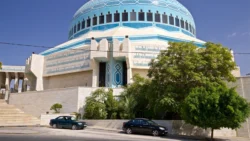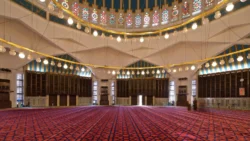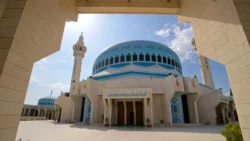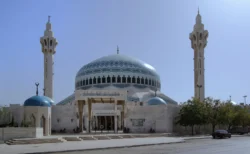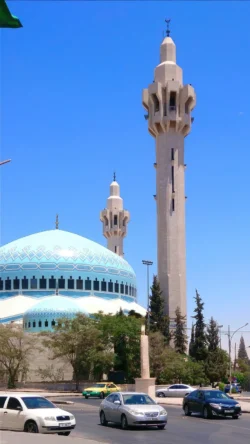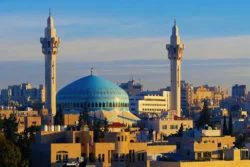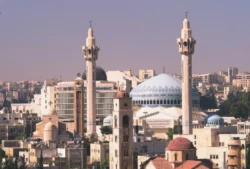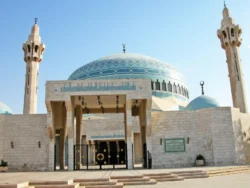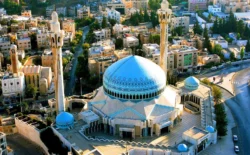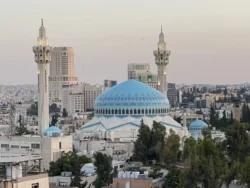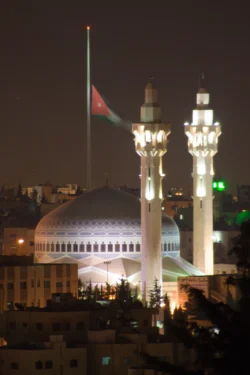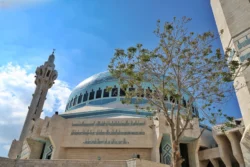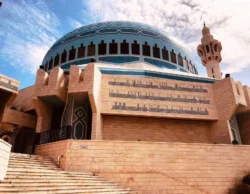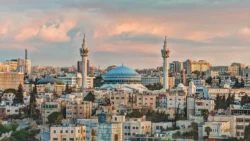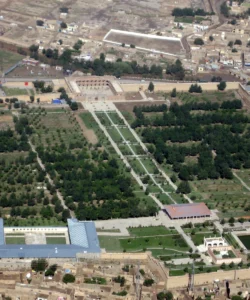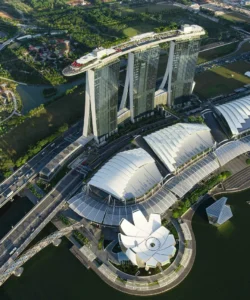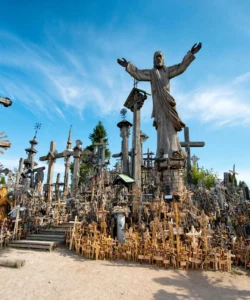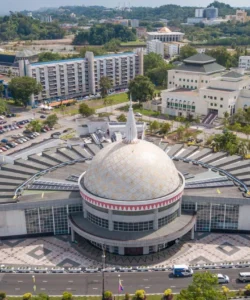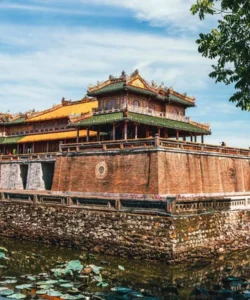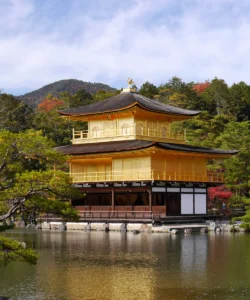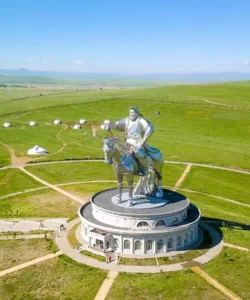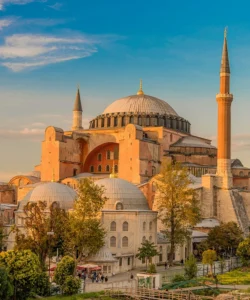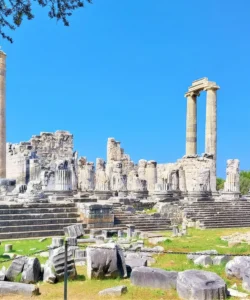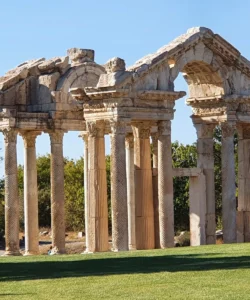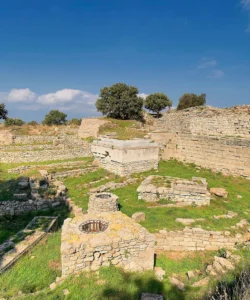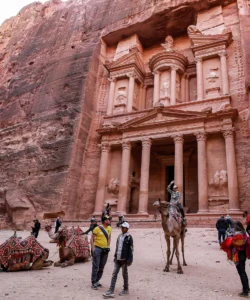The King Abdullah I Mosque is a modern landmark in Amman, Jordan. Built in the late 20th century as a memorial by King Hussein to his grandfather, it is a striking symbol of modern Islamic architecture and a unique destination that welcomes people of all faiths.
Listen to an introduction about King Abdullah I Mosque
Name
King Abdullah I Mosque (Arabic: مسجد الملك عبد الله الأول, Masjid al-Malik ‘Abdullāh al-Awwal), often referred to as the “Blue Mosque” due to its distinctive dome.
Address
The mosque is located in the Abdali area of Amman, Jordan, near the city center. Its prominent blue dome is a recognizable feature of the Amman skyline.
How to Get There
The mosque is easily accessible from anywhere in Amman.
- By Car or Taxi: The mosque is just a short drive from downtown Amman, taking about 5 to 10 minutes. A taxi or a ride-sharing service is the most convenient way to get there.
- By Bus: Public transportation is available, with buses running to the Abdali area.
Landscape and Architecture
The King Abdullah I Mosque is a stunning example of modern Islamic architecture that blends traditional design with contemporary features.
- The Blue Dome: The mosque’s most famous feature is its massive, blue mosaic dome, which is 35 meters (115 feet) in diameter. It is an engineering marvel, as it covers the entire main prayer hall without any internal columns.
- Spacious Prayer Hall: The main prayer hall is a large, octagonal space that can accommodate up to 3,000 worshippers. The interior is decorated with beautiful Qur’anic calligraphy and an intricate chandelier.
- Minarets and Courtyard: The mosque is flanked by two tall, elegant minarets. It has a large courtyard that can hold thousands of additional worshippers during major religious holidays.
- Design and Inclusivity: The design incorporates influences from Ottoman, Persian, and local Jordanian styles. The mosque is also notable for being one of the few in the region that openly welcomes non-Muslim visitors, providing modest attire for those who need it.
What Makes It Famous
The King Abdullah I Mosque is famous for its visual beauty, its symbolism, and its role as a welcoming space.
- Symbol of Unity and Heritage: The mosque was built to honor the founder of modern Jordan, King Abdullah I, and serves as a symbol of the Hashemite monarchy’s connection to Islam and its role as a unifying force in the country.
- A Modern Landmark: Its grand design, especially the iconic blue dome, has made it one of Amman’s most recognizable and photographed landmarks.
- Open to All: Unlike many mosques, it is open to non-Muslim visitors, who can explore its beauty and learn about Islamic culture and worship, making it a popular tourist destination.
Differences from Some Other Wonders (e.g., Umayyad Mosque)
While both the King Abdullah I Mosque and the Umayyad Mosque in Damascus are significant religious sites, they represent different eras and architectural approaches.
- Historical Era: The Umayyad Mosque is an ancient monument from the 8th century CE, a masterpiece of early Islamic architecture. The King Abdullah I Mosque is a modern building, completed in 1989, that pays homage to traditional Islamic styles.
- Architectural Style: The Umayyad Mosque is defined by its layered history, built on a Roman temple and a Byzantine basilica, with a design that became a prototype for many hypostyle mosques. The King Abdullah I Mosque is a distinctive example of late 20th-century Islamic architecture, with its prominent, column-free dome being a central feature.
- Context: The Umayyad Mosque is part of a bustling, continuously inhabited ancient city. The King Abdullah I Mosque stands in a more open space in modern Amman, serving as a memorial and a central public building.
King Abdullah I Mosque Photos:
